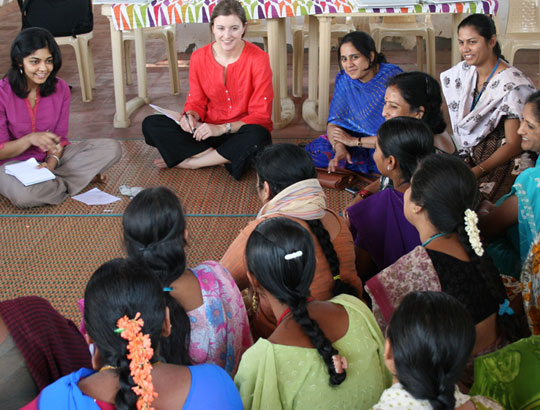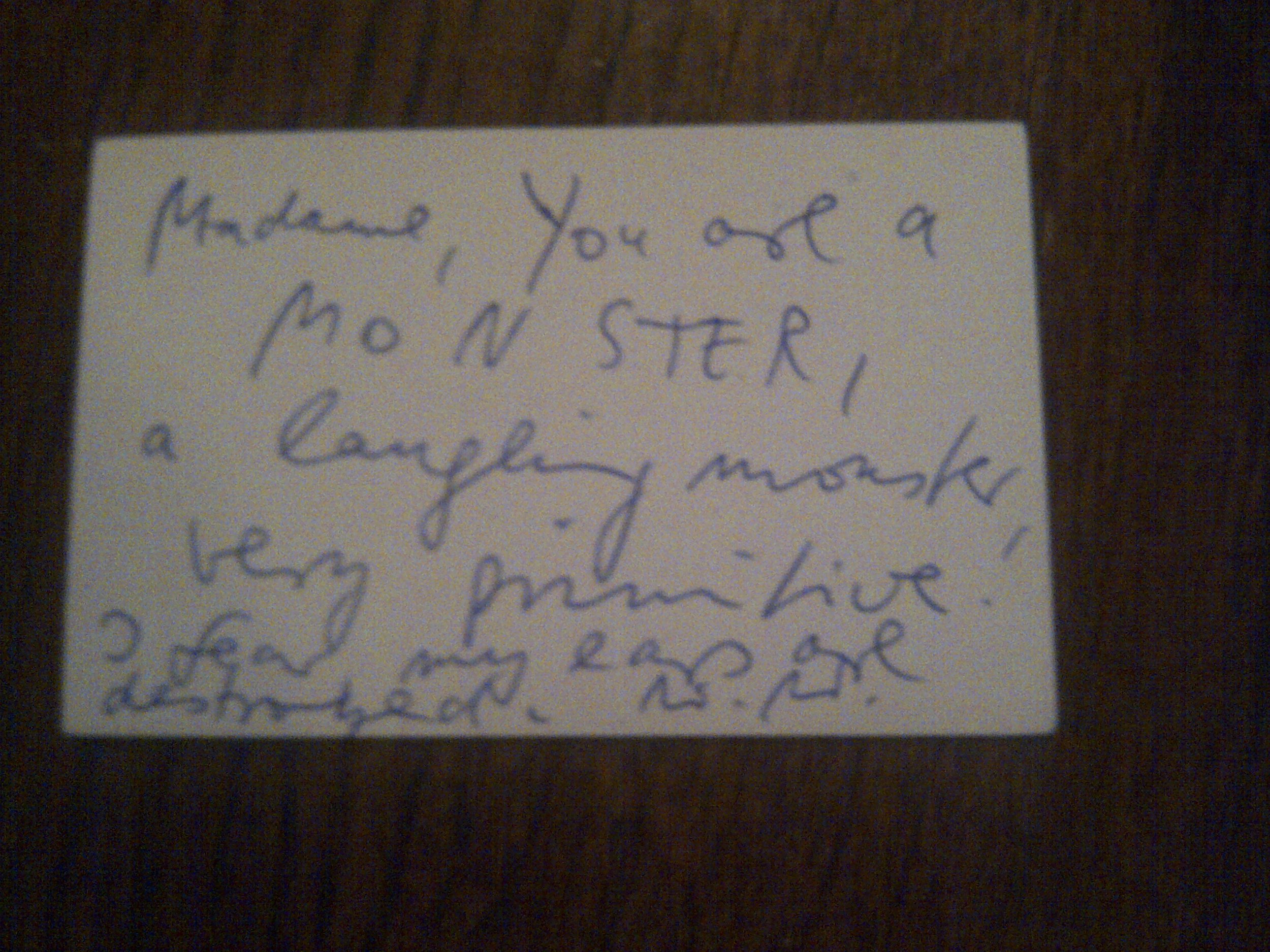Author's note: I was assigned to cover a start-up for class, and having just come off the heels of an interview with Hanna Rosin, was feeling very End-of-Men-y. Her thesis - that patriarchy is on the wane, at least in America - sure rings true when you're in the company of the women behind The Daily Muse. I'm not convinced that patriarchy is giving up without a fight, but as someone who finds mainstream women's magazines very problematic, it's great to see content that's geared towards getting women ahead, instead of making us feel fat or inadequate. With Professional Women on the Rise, New Startup Hopes to Link its Readership with Hungry Employers
NEW YORK CITY – On a Friday evening at 5 pm, the elevator at 33 West 17th Street discharged half a dozen young women into an unseasonably warm New York City evening. On the ninth floor, Alexandra Cavoulacos and Kathryn Minshew, co-founders of the Daily Muse, were still huddled over a table in their bright white Silicon Alley office, documents in hand, preparing for a conference call.
Cavoulacos and Minshew, along with their co-founder Melissa McCreery, are banking on the idea that there are millions more women like the ones just spotted leaving work (whom they guessed worked for handbag designer Rebecca Minkoff, who has offices on the sixth floor) -- young, ambitious and tired of traditional women’s magazines offerings – and that companies recognize their potential.
The Daily Muse is an online magazine that provides content geared towards career-focused women. Minshew’s own experience as a consultant at McKinsey, which she joined after graduating from Duke University in 2008, inspired her to launch the Daily Muse. She realized very quickly that, as a woman, “the workplace experience was different.” Take mentoring, for instance. Minshew cited research showing that senior male executives are uncomfortable mentoring younger women because of concerns about appearances, which may leave women at a disadvantage.
“It’s hard to find a mentor if you work with a boss of a different gender,” she said. The Daily Muse offers the kind of career advice and feedback that ambitious young women like her need, often written by ambitious young women like herself.
“For me, the person who is most qualified to give advice to a recent law school grad who’s experience a law office for the first time is another recent law school grad, or a group of recent law school grads, who are one to five years older,” she said. “Some of our most powerful articles have been by women in their late 20s and early 30s saying ‘Here are the five mistakes I made in my most recent job, and how you can avoid making them too."
The site, which soft-launched in early September of this year, comes at an auspicious time for working women, who are infiltrating the workforce at an impressive clip. Bureau of Labor Statistics data show that 51.4% of managerial and professional jobs are now held by women, versus 26.1% in 1980. A May 2011 BLS report on women’s employment during the recovery noted that “women college graduates are likely to outnumber male college graduates in the near future.”
In addition to career advice, the site features contributions from some of the most successful women in their respective industries, such as a contribution to the “Letters to My Younger Self” column by media mogul Arianna Huffington (her tip: get more sleep.) While the first four categories on the home page are Career, Job Search, Entrepreneurship and Education, there are regular contributors on beauty, fashion, hobbies, and technology, among other topics.
Minshew and her colleagues are not the only ones hoping to target this demographic. In recent years, the mainstream media have caught on to their potential Forbes magazine launched ForbesWoman in 2009; the Wall Street Journal hosted a Women in the Economy conference in 2010; Bloomberg has scaled up its coverage of women in the past year; and the Financial Times has maintained a “Women at the Top” blog for professional women since 2009. More specialized sites like Vivanista, dedicated to women in philanthropy, and Ladies Who Launch, focused on women entrepreneurs, as well as more general career-oriented sites like the Levo League and Hello Ladies!, are all hoping for a piece of the pie.
Unlike most mainstream media sites, whose large audiences appeal to advertisers, Minshew does not plan to rely on advertising for revenue. Instead, the Daily Muse will offer services like headhunting, professional development courses and other networking opportunities.
“We’ve been approached by employers who are excited, who tell us ‘Oh my goodness, you’ve got this pool of incredibly qualified, ambitious women who want to read about how to be good managers, and good employees and good speakers. How can we hire them? How can we work with you to share our job opportunities with them?’” Minshew said.
“Beyond that, the workplace is becoming more skill-based and less industry-based,” she said, noting that women may have an advantage in a new economy that prioritizes excellent verbal and written communications skills over the physical brawn that once-dominant industries like construction and manufacturing required.
Pattie Simone, a serial entrepreneur and founder of WomenCentric.net, a platform for women professionals, said the crowded field is both a blessing and a curse.
“As more people realize the buying power and overall influence of more women in the workforce, as well as the explosion of women-founded entrepreneurial ventures, the more content providers there will be, vying for the same audience,” she said. She encouraged them to think about finding multiple revenue streams, citing Ladies Who Launch and the Women’s Leadership Exchange as two other sites that have done this successfully.
Sarah Granger, a writer and new media innovator and strategist, advises them to keep refining their voice and their offerings over the next few years, and also predicted a redesign of the site in that time-frame, which she said is normal for media-based startups. While they have “a unique collection of content for the target audience they selected,” she said, “They'll need to find a unique niche where they provide the best content or services in order to survive as a for-profit venture.”
The Daily Muse is currently self-funded, said co-founder and fellow McKinsey alum Alexandra Cavoulacos, but they hope to have their seed round of outside funding commitments finalized by the end of the year. In the two months since it’s been up, they have met their 30% month-on-month readership growth rate. They have already completed some revenue deals already, including helping an internet start-up fill a general manager position by announcing it to their readers and then filtering applications.
Jennifer L. Pozner, a media critic and founder and director of Women in Media and News (WIMN), applauded the Muse’s effort to seek alternative revenue streams.
“Advertisers are permeating our media content at a more extreme level than ever before,” she said. “Women deserve to be valued as media consumers, rather than simply traded for our eyeballs.”


